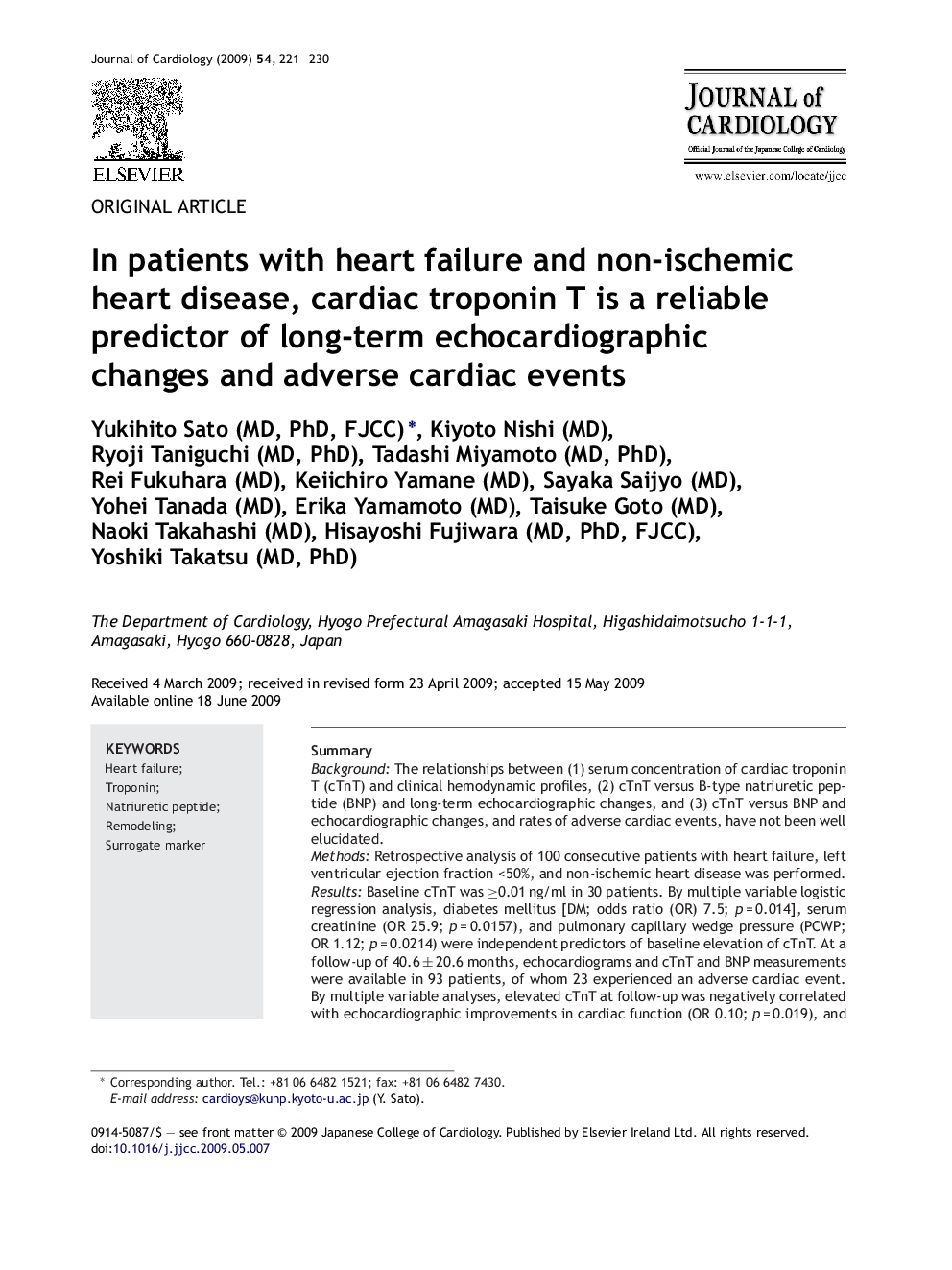| Article ID | Journal | Published Year | Pages | File Type |
|---|---|---|---|---|
| 2963683 | Journal of Cardiology | 2009 | 10 Pages |
SummaryBackgroundThe relationships between (1) serum concentration of cardiac troponin T (cTnT) and clinical hemodynamic profiles, (2) cTnT versus B-type natriuretic peptide (BNP) and long-term echocardiographic changes, and (3) cTnT versus BNP and echocardiographic changes, and rates of adverse cardiac events, have not been well elucidated.MethodsRetrospective analysis of 100 consecutive patients with heart failure, left ventricular ejection fraction <50%, and non-ischemic heart disease was performed.ResultsBaseline cTnT was ≥0.01 ng/ml in 30 patients. By multiple variable logistic regression analysis, diabetes mellitus [DM; odds ratio (OR) 7.5; p = 0.014], serum creatinine (OR 25.9; p = 0.0157), and pulmonary capillary wedge pressure (PCWP; OR 1.12; p = 0.0214) were independent predictors of baseline elevation of cTnT. At a follow-up of 40.6 ± 20.6 months, echocardiograms and cTnT and BNP measurements were available in 93 patients, of whom 23 experienced an adverse cardiac event. By multiple variable analyses, elevated cTnT at follow-up was negatively correlated with echocardiographic improvements in cardiac function (OR 0.10; p = 0.019), and was a significant predictor of adverse cardiac events after adjustment for covariables, including follow-up BNP and echocardiographic changes (hazard ratio 5.6; p = 0.0046).ConclusionsDM, serum creatinine, and PCWP were correlated with elevated baseline serum cTnT concentrations. cTnT concentration during follow-up might be a surrogate marker of heart failure.
